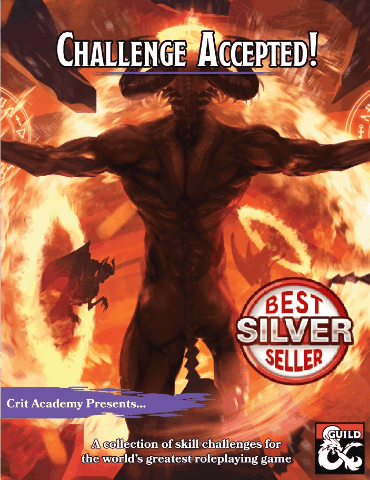Hexcrawls 5e: How to Improve the Exploration Pillar in Dungons & Dragons
- Justin Handlin

- Aug 21, 2021
- 5 min read
Join us Live 7pm Eastern 8/22/21
Do you want to be a better D&D Player? Do you want to become an amazing Dungeon Master? Then subscribe NOW to get notified when we publish new D&D Tips and Tricks videos
How to Run Hexcrawls in Dungeons & Dragons

The hexcrawl is a game structure for running wilderness exploration scenarios. Although it was initially a core component of the D&D experience, the hexcrawl slowly faded away. Robbins’ West Marches campaign went viral that people started to rediscover the lost art of the hexcrawl. The format has returned to prominence in one of Dungeons & Dragons newest releases Tomb of Annihilation for D&D 5th Edition.
BASIC HEXCRAWL STRUCTURE
Special thanks to The Alexandrian for their in-depth breakdown of Hexcrawls that we will be using as our guide in this episode. You can find more guidance and fantastic articles here.
Hexcrawls are only one way of running wilderness travel and there are actually many different varieties of hexcrawls and schools of thought on how they should be designed or run. “True” hexcrawls, however, share four common features.
They use a hexmap. In general, the terrain of the hex is given as a visual reference and the hex is numbered (either directly or by a gridded cross-reference). Additional features like settlements, dungeons, rivers, roads, and polities are also often shown on the map.
Content is keyed to the hexmap. Using the numbered references, some or all of the hexes are keyed with locations and/or encounters.
Travel mechanics determine how far the PCs can move and where they move while traveling overland. After determining which hex the PCs are starting in, the GM will use these mechanics (and the decisions the players make) to track their movement.
When the PCs enter a hex, the GM will tell them the terrain type and determine whether or not the keyed content of the hexmap is triggered: If so, the PCs experience the event, encounter the monsters, or see the location. (There is often a 100% chance that the keyed content will be triggered.)
Around this basic structure, you can build up a lot of additional features and alternative gameplay. For example, mechanics for random encounters and navigating (or, more importantly, getting lost in) trackless wastes are quite common. Hex-clearing procedures were once quite common, too, as an antecedent for stronghold-based play.
The important thing to remember when creating and running hexcrawl, is that it is a way to structure the exploration aspect of roleplaying. This unique map and adventure style is a great way to spark up your team and dig deeper into the world around you.

This exploration of the open world can attract time-consuming, albeit luxurious, destinations. You can end up playing a few more sessions so the whole party can scour the map.
There is no wrong way to play. Whatever the party's decision, make sure they can do something along the way. Distribute unique hexes on the map and make sure they line up with random encounters in case they don't move onto these unique hexes.
Hexcrawls are wonderful worldbuilding and exploring tools. They're such a simple and open-ended approach for the guests to explore the planet. Sure, the GM has influence over some aspects of a hexcrawl, such as a map's structure and encounters, but the party gets to choose what they want to see.
That's not even taking into consideration how the party interacts with the various encounters and events they're a part of. This allows them to experience and learn the world's people, places, and things in a very organic way.
I know I'll try to incorporate more hexcrawls into my future games. This first, if minor, attempt at hosting a hexcrawl was, in my opinion, a huge success. My players were far more interested in visiting the world than they would have been in any of our usual travel sessions.
Sign Up and get a FREE copy of our best-selling D&D Supplement: Challenge Accepted. You will also be entered to win our weekly RPG PhatLoot Giveaways!
Make sure to subscribe to our show here and Youtube so we can help you on your future adventures as well as a chance to win cool prizes each and every week. Make sure to check out our fellowship members as well. Or support us on Patreon and get weekly Dungeons and Dragons loot!
D&D Character Concept: Marbas Horror, Male Tiefling
Description: This tall, slender man wears just a black suit. His hair is short and dark red. His eyes are white.
Personality: He does not care much for physical appearances, nor does he care much for other people. He does however care about what he wants and getting it. He is used to getting what he wants. In part because he is a meticulous planner.
History: Marbas was born in the north. At a young age he loved to build and create. He graduated from the Naval Academy and went to see the world at the rank of Ensign. He advanced relatively quickly due to his good work ethic, understanding of the chain of command, and natural leadership ability. He was recently attacked on the road and savagely beaten by bandits.
Motivation: He will attempt to ambush and attack anyone he thinks he can take on alone and try to knock them out with non-lethal damage. If successful, he will try to sell them to his slave-trader contact; and he wants nothing more than to rejoin the army
D&D Monster Variant: Drider Bladeweaver
Origin: Ettercap
Bite becomes a poisoned rapier.
New Features: Can cast the darkness spell 1/day
Legendary Actions
Reel. The drider pulls a creature restrained by its web up to 20 feet towards itself.
Web Lasso. The drider throws a strand of webbing at a creature within 10 feet. The target must succeed
on a DC 12 Dexterity saving throw or be restrained by the drider’s web ability.
Web Recharge. The drider rolls to recharge its web.
D&D Magic Item: Shellcracker - Dalcinea
Weapon (warhammer), very rare
For all intents and purposes, this looks like any other mundane warhammer, but holding it reveals a thrum of magi through its handle. With every strike, the rhythm of magic explodes through the hammer’s head, permanently reducing the target’s AC by 1, to a minimum of 10 + Dex modifier, until the armor is professionally repaired (Natural Armor is repaired during a long rest.
On a critical strike, the target’s armor is reduced to 10, regardless of DEX modifier, for 1d4 rounds. Upon recovery, the target’s AC returns to 10 + Dex modifier, regardless of where it was before the critical strike.
D&D Dungeon Master Tip: PC’s in charge of their own fate.
If you use random encounters, consider letting them players roll the dice.
This puts them in control of their own fate, and lets them feel the weight of their decisions to rest often.
D&D Player Tip: Prismatic Obliteration
Prismatic Wall to create a 30 foot diameter spherical wall in the air. A creature that passes through it takes 10d6 damage of each: fire, acid, lightning, poison and cold. In addition there is a chance they will turn to stone and/or become blinded.
Once you great the prismatic wall, you use the reverse gravity spell to send enemies tumbling up into the sphere. They take 60d6 damage going up, through both ends of the sphere wall, and then drop concentration and send them back down taking another 60d6.
*Crit Academy is an Affiliate of Amazon, DMsguild and DriveThruRPG*






















Comments